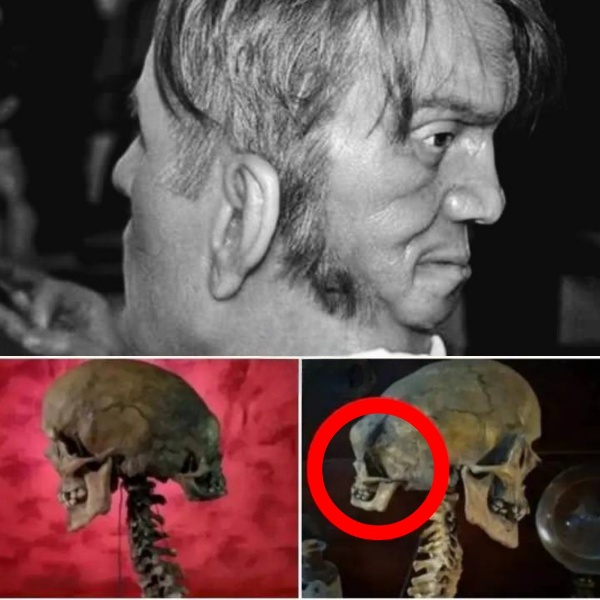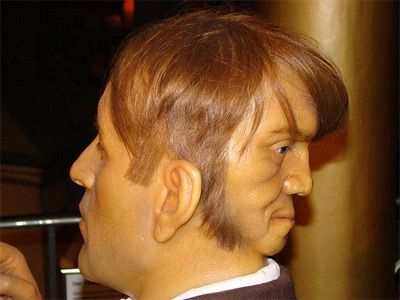Some stories live on not because they’re proven true, but because they touch something deep in our collective imagination. The tale of Edward Mordake is one of those eerie stories—a mix of medical mystery, psychological horror, and raw human tragedy. And even though the facts may be blurred, the legend has haunted minds for over a century.
Let’s dive into the strange and sorrowful tale of the man with two faces.
The Man Behind the Mystery

Edward Mordake (sometimes spelled Mordrake) was reportedly a young English nobleman, born in the 19th century. He was described as handsome, wealthy, and intelligent—traits that normally promise a bright future. But Mordake was not known for these qualities.
He was known for something far more unsettling: a second face on the back of his head.
This face, according to legend, was fully formed. It didn’t eat, speak clearly, or blink. But it could cry. It could laugh. And it could whisper.
Craniopagus Parasiticus: A Rare Condition Explained
While the legend seems far-fetched, there is a medical condition that could, in theory, explain Mordake’s physical anomaly. Craniopagus parasiticus is an incredibly rare form of conjoined twinning, where a parasitic twin—an underdeveloped sibling—remains attached to the body of its host.
In some recorded cases, these parasitic twins appear as non-functional limbs or even partially formed heads. In Mordake’s case, the second face allegedly developed a level of expressiveness that defied scientific explanation—one of the reasons the story walks a fine line between medicine and myth.
The Face That Whispered: Folklore or Psychological Horror?
Here’s where the story takes a turn for the truly disturbing.
Video : Edward Mordrake The Man with Two Faces 😱
According to most versions of the tale, Mordake claimed that the second face whispered to him at night. It murmured demonic things, dark thoughts, secrets no one should hear. It smiled while he cried. It scowled when he laughed. And it never stopped.
Those whispers weren’t just unsettling. They reportedly drove Mordake to madness. He pleaded with doctors to remove the second face, begging them to silence its voice. No surgeon would try.
Eventually, the whispers became too much. And, as the story goes, Mordake ended his life in his early twenties. In his final note, he supposedly requested that the “demon face” be destroyed before burial, so it would never torment him again in the afterlife.
Fact vs. Fiction: Can We Trust the Tale?
Let’s be real for a moment. The Edward Mordake story has all the makings of gothic fiction. That’s because it likely started that way.
The earliest known reference to Mordake appears in an 1895 article published in The Boston Post, which listed several “human oddities.” This article itself was probably inspired by the popular Victorian fascination with the grotesque and the mysterious.
Historians and medical experts today generally agree that Mordake may never have existed—or if he did, his condition has been drastically sensationalized. There are no verified medical records. No family documents. No official burial records. Just second-hand stories passed down through time, morphing into something stranger with each retelling.

Why We’re Still Obsessed with Edward Mordake
So why does this story persist?
Because it taps into something ancient—our fear of being trapped inside our own bodies. Of being haunted not by an external ghost, but by something attached to us. Something we can’t control.
Mordake’s tale is also a metaphor for internal struggle. The second face could represent mental illness, guilt, shame, or trauma—anything that follows us silently, always watching, always whispering. In that way, his story is timeless.
Pop Culture Keeps Him Alive
Edward Mordake hasn’t faded into obscurity. On the contrary, pop culture has embraced him.
His story inspired an episode of American Horror Story: Freak Show, where he was portrayed as a spectral figure who came for “cursed” sideshow performers. He’s been the subject of dozens of documentaries, podcasts, and horror stories. Artists have drawn him, musicians have referenced him, and writers continue to reinvent his legend.
He’s even made his way into internet folklore—Reddit threads, YouTube shorts, and TikTok videos explore his supposed life and eerie affliction, giving him an almost mythical status among modern audiences.
The Legacy of a Tormented Soul
Whether real or fictional, the legend of Edward Mordake leaves us with important takeaways. First, it reminds us of how society views physical and psychological differences. In many ways, Mordake is a tragic symbol of how loneliness and shame can consume even the most privileged among us.
Video : The Cursed Life of A Man With Two Faces
Second, his story encourages us to look deeper at how we define identity. What do we do when we feel like we’re carrying a part of ourselves that doesn’t belong? Whether it’s a burden of trauma, mental illness, or simply feeling “different,” Mordake’s legend is one that many people can relate to—even if the details are exaggerated.
Conclusion: A Whisper That Never Fades
The tale of Edward Mordake is more than just a creepy urban legend. It’s a story of torment, isolation, and the desperate need to be seen as whole.
Real or not, the whispers from the face on the back of Mordake’s head continue to echo through the years—reminding us that sometimes, the scariest things aren’t monsters under the bed but the demons we carry within.
And maybe, just maybe, that’s why we can’t stop telling his story.


